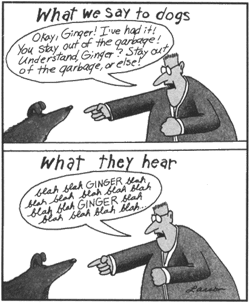This has to do with Memoirs of a Geisha. But I don’t give a hoot about what is probably a profoundly silly movie that I have no intention of paying money to see. Nor do I care about Beijing’s profoundly silly objections to it. What I’m interested here is how Chinese characters were manipulated for the name.
In Mandarin, the word for “geisha” is yìjì, which is written 藝妓 in traditional Chinese characters and 艺妓 in “simplified” Chinese characters. The word for “memoirs” is huíyìlù, written 回憶錄 (回忆录 in simplified characters).
Thus, Memoirs of a Geisha could be translated as Yìjì huíyìlù, which it has been up to a point. (This is something of a surprise in itself, because Western movies tend to be completely retitled in Taiwan, Hong Kong, and China rather than have their titles translated into Mandarin. There’s a tedious sameness to most of these titles, which tend to imitate titles of other popular movies and throw in 愛 (ài, love) a lot.)
As written in Chinese characters, the title in Taiwan of the movie is 藝伎回憶錄, not the expected 藝妓回憶錄. Note the difference in the second character:
伎 vs. 妓
The form in the movie title has the “person” radical 亻, while the original form has the “woman” radical 女.
The one with the woman radical is strongly associated with prostitution. Here are a few of the many prostitution-related words that contain this character:
- 娼妓 chāngjì n. prostitute; streetwalker
- 娼妓館 chāngjìguǎn p.w. brothel
- 妓館 jìguǎn p.w. brothel
- 妓女 jìnǚ n. prostitute
- 妓院 jìyuàn p.w. brothel
- 營妓 yíngjì n. prostitutes serving military units
- 箏妓 zhēngjì n. zither-playing courtesan
Even a word for male prostitute takes this character: 妓男 (jìnán).
Here, by way of contrast, are some of the words containing the character with the “person” radical:
- 伎巧 (also 技巧) jìqiǎo n. (1) technique; skill; craftsmanship; dexterity (2) acrobatic gymnastics
- 才伎之士 cáijìzhīshì f.e. a person of outstanding ability in craftsmanship
- 歌舞伎 gēwǔjì n. (1) (trad.) female dancer/singer (2) (Jp.) Kabuki
- 鬼蜮伎倆 guǐyùjìliǎng id. devilish stratagem; evil tactics
- 故技/伎 gùjì n. old trick/tactics
- 故伎重演 gùjìchóngyǎn f.e. play the same old tricks; be up to one’s old tricks again
- 賤伎 jiànjì n. inferior/lowly arts
- 伎而止此 jì’érzhǐcǐ f.e. One’s cleverness stops here.
- 伎/技倆 jìliǎng n. (1) trick; intrigue; maneuver (2) skill; dexterity; craft
- 伎藝 jìyì n. (1) mechanical arts (2) expert skill
So the switch from 妓 to 伎 was an attempt to soften the connotations of prostitution, changing Memoirs of a Geisha (i.e. prostitute, in common association, whether that’s just or not) to Memoirs of a Skilled Performer. It also brings to the fore the phonetic basis for Chinese characters as it is no coincidence that 妓 and 伎 are pronounced the same. This same phonetic basis, however, is why the revised name isn’t really different; it just looks different. All this is the written equivalent of fancy footwork. It doesn’t really change a thing. Yìjì is the word for geisha, so that’s what is going to come to mind, not “skillful performer” — not unless the movie-title’s usage somehow becomes widely used and longlasting. But I doubt it.
After all, the translators could have adopted another word for geisha, gējì, which takes both forms: 歌伎 and 歌妓. So why not use 歌伎 and get rid of that troublesome 妓 character without bending any usage? Because the main word for geisha is still yìjì, and geji is also used for prostitutes (there’s that word again) who sang and danced. And maybe some people would have been expecting a musical because of 歌 (gē, song).
Although it might sound sophisticated for the translators to have played with Chinese characters this way, it’s not really all that different from naming a band Wyld Stallyns instead of Wild Stallions.
Memoirs of a Wyld Stallyn? Hmm. Now that might have potential.
source: ‘Memoirs of a Geisha’ Lost in Political Din, IPS, February 7





